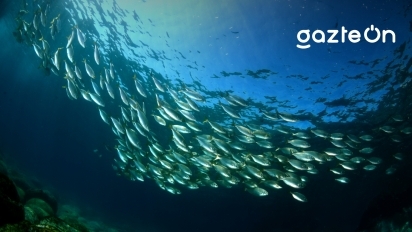Sustainable fishing and Climate Change
Nerea Páramo Ormaetxe, Industrial Design and Product Development Engineer, member of the Omegabyte team and promoter of the Sharksafe Project.

Origin of the project.
The Sharksafe Project was born in the context of the Innovathon Bermeo 2020 organised by BTWC (Bermeo Tuna World Capital), an innovation hackathon focused on responding to the different challenges that the fishing industry faces today.
One of the challenges of the project was to avoid the incidental bycatch of non-target species. Bycatch is caused when species that are not the target of the fishery are caught in fishing gear. The project addressed the problem of bycatch of elasmobranchs, which include sharks and rays.
One of the main reasons of this decision was the fact that these species own relatively low reproductive rates and a late developmental age. In addition, they found that these species, unlike other marine species, possess electro-sensitive organs, the so-called ampullae of Lorenzini, which are capable of detecting electromagnetic fields. While many marine species are endowed with the ability to detect the earth’s magnetic field to guide migratory flows, to date no species is known to be able to detect electric fields. Thus, they found a clear differentiation that made it possible to develop some kind of system or technology capable of deterring these species from fishing grounds.
One of the objectives of the project was to promote new technologies to enable the tuna fleet to advance towards sustainability goals and thus ensure the conservation of species and biodiversity. Taking advantage of this differentiating electrosensitivity that sharks and rays possess, they proposed a device that would generate an electrical gradient capable of over-stimulating these organs, so that these species would be driven away from the fishing ground.
Development of the project.
The initial intention was to develop a testable device capable of providing metrics of shark behaviour in response to these electrical stimuli, but this has not been possible. Unfortunately, to date, neither the means nor the resources are available to bring the project to fruition.
From the beginning of the project, a clear need for research and collaboration was detected in order to develop the prototype. Firstly, the state of the art of the proposed technology was very limited, there was little research on the subject and there was only one commercially available device that used this technology.
On the other hand, a political-legislative barrier was encountered. To date, the only international shark conservation measure is the International Plan of Action for Sharks (IPOA-Sharks), which has a voluntary character. Although discard prevention and management measures are in place in many EU countries, most sharks that end up on board fishing vessels do not survive after being released due to damage to their internal organs during handling.
Looking to the future.
The intention was to present the proposal at the World Ocean Conference in Lisbon in June 2021, but due to the health emergency it has not been possible. Although the project is currently stalled due to a lack of financial, material and human resources, the hope of the promoters of this proposal is that some initiative will emerge to promote the development of projects that promote the conservation of these species. They understand that general public’s perception of sharks is negative and that this does not help. Therefore, they try to raise awareness and make people understand that these species, beyond their bad reputation, are vital for the balance of marine biodiversity. Being at the top of the food chain, the disappearance of large groups of these predators can have catastrophic consequences on the balance of ecosystems, and can generate chain effects that are unpredictable and difficult to estimate.
The promoters of the Sharksafe Project remain hopeful that legal measures will be strengthened and that both intentional and incidental catches of these species will be punished, as well as encouraging the development of technologies to prevent bycatch. For the time being, their work will continue to be raising public awareness of the importance of shark conservation, making people understand that sharks are here to help us and not to harm us.

